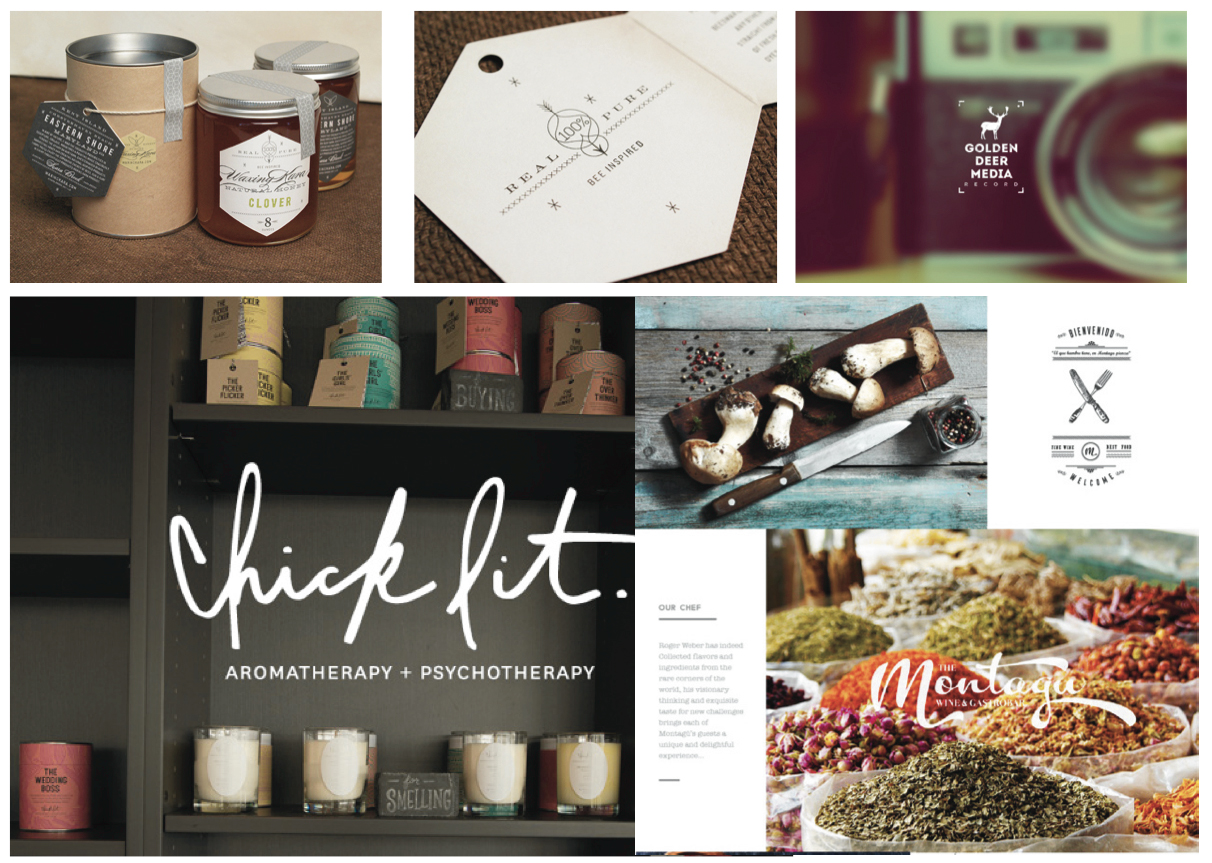Moodboards: Feeling Your Way Through Brand Discovery
Once relatively exclusive to the fashion design industry, moodboards are everywhere now–design, architecture, politics, education, therapy…basically anywhere one’s brand or identity is a work in progress. I use them a lot in the design work I do, whether for a brand identity project, or to determine the mood of an internal campaign for an already well-established brand. While they may seem a silly, touchy-feely exercise to some, this visual exploration of mood and emotion are incredibly useful in ways a verbal exploration can’t be. Moodboards can evoke immediate visceral reactions, acting as a litmus test of a brand’s perception. They’re immensely helpful in shaping the design plan, but also very helpful to clients trying to pinpoint what they want their brand to communicate. I’ve never had a client regret taking the time to work through the process.
So what is a moodboard? Simply defined, it’s “an arrangement of images, materials, pieces of text, etc., intended to evoke or project a particular style or concept.”

Digital Collections
When I talk about a moodboard process, it doesn’t have to be exceptionally complex or time-consuming. Many of us are creating moodboards on a daily basis, without even realizing it. Social media platforms like Pinterest and Instagram are effectively digital moodboard tools, where we collect, react to, or follow image-based sets of ideas. Therapeutic exercises often encourage creating a collage of magazine clippings to help visualize and articulate life goals or emotions we’re struggling with. A moodboard can be a messy collection of clippings, or a highly-curated and designed piece, but the goal is to keep it emotion or “vibe” based.
Facts vs. Feelings
It’s common for clients to feel unsure of themselves when trying to communicate what they want in design terms. This is where moodboards are especially helpful. I don’t necessarily expect clients to have a favorite font, but I do expect that they’ll react positively or negatively to different fonts if I show them some options. So using the moodboard to create a visual conversation in order to work through likes and dislikes is helpful to both me and the client. It’s like this T magazine piece concludes: “When everything is available all the time and we’re inundated with information in every way, shape and form, we’re left no choice but to favor what makes us feel.”
How to
Here are a few helpful tools to create moodboards online (you may already use some of these in other ways!):
It can also be as straightforward as collecting images from a keyword-based Google image search, and compiling them into a single Word or PPT doc.
Next time you tackle a project with unclear design or branding goals, consider putting together some moodboards (or working with your designer to do so). It’s a fun exploration, and can result in a much stronger final design.